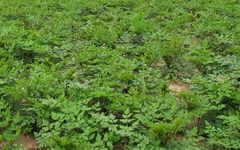Angelica Sinensis (Dong Gui) is the dried root of the plant Angelica sinensis (Oliv.) Diels, belonging to the Apiaceae family. It is harvested in late autumn, with the fibrous roots and soil removed. After some moisture evaporates, it is bundled into small bunches and slowly dried using smoke.
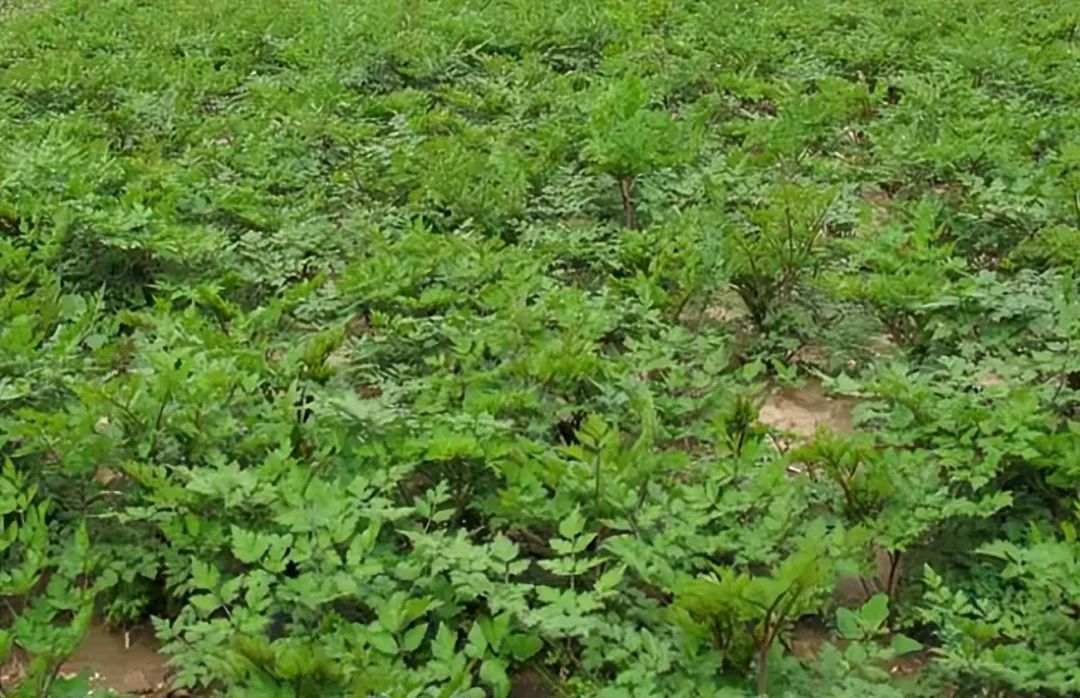
Angelica Sinensis Cultivation
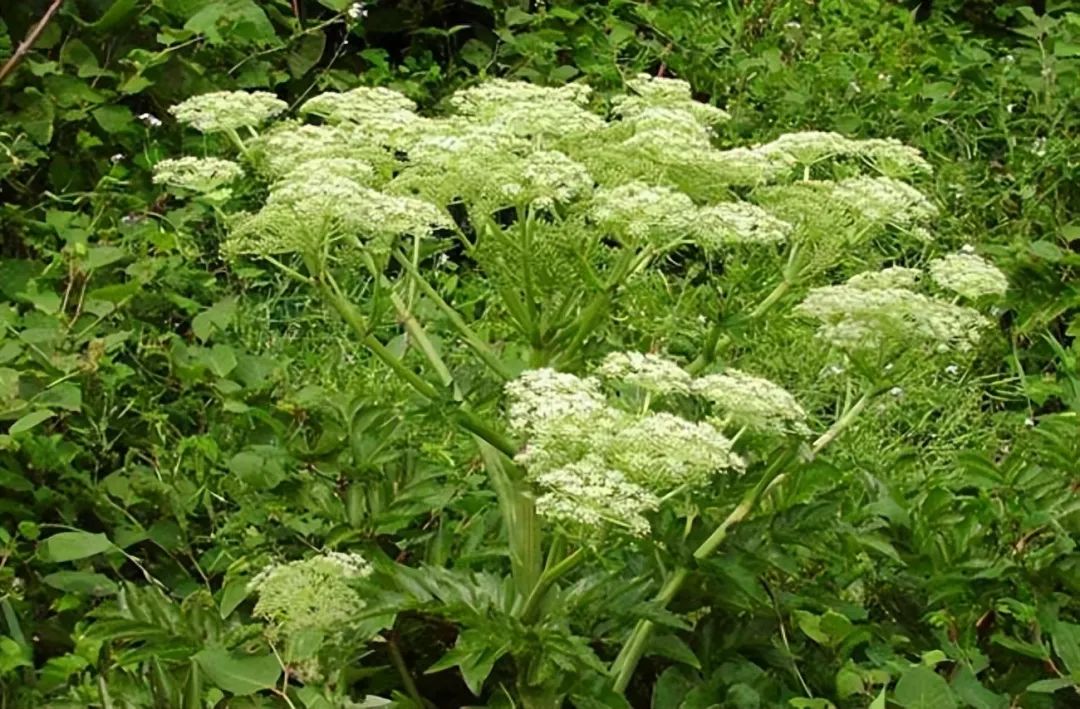
Angelica Sinensis Plant
【Characteristics】 The product is slightly cylindrical, with 3 to 5 or more lateral roots at the lower part, measuring 15 to 25 cm in length. The surface is light brown to brown, with longitudinal wrinkles and transverse, long, pore-like protrusions. The root head (Gui Tou) has a diameter of 1.5 to 4 cm, with ring patterns, the upper end is rounded or has several prominent rhizome scars, and remnants of purple or yellow-green petioles and leaf sheaths; the main root (Gui Shen) has an uneven surface; the lateral roots (Gui Wei) have a diameter of 0.3 to 1 cm, thicker at the top and thinner at the bottom, often twisted, with a few fibrous root scars. The texture is flexible, with a fracture surface that is yellowish-white or light yellow-brown, thick periderm, with cracks and numerous brown dot-like secretion cavities, while the wood part is lighter in color, with the cambium ring being yellow-brown. It has a strong aroma, with a sweet, spicy, and slightly bitter taste. Specimens that are excessively dry, brittle, or have a green-brown fracture surface are not suitable for medicinal use.
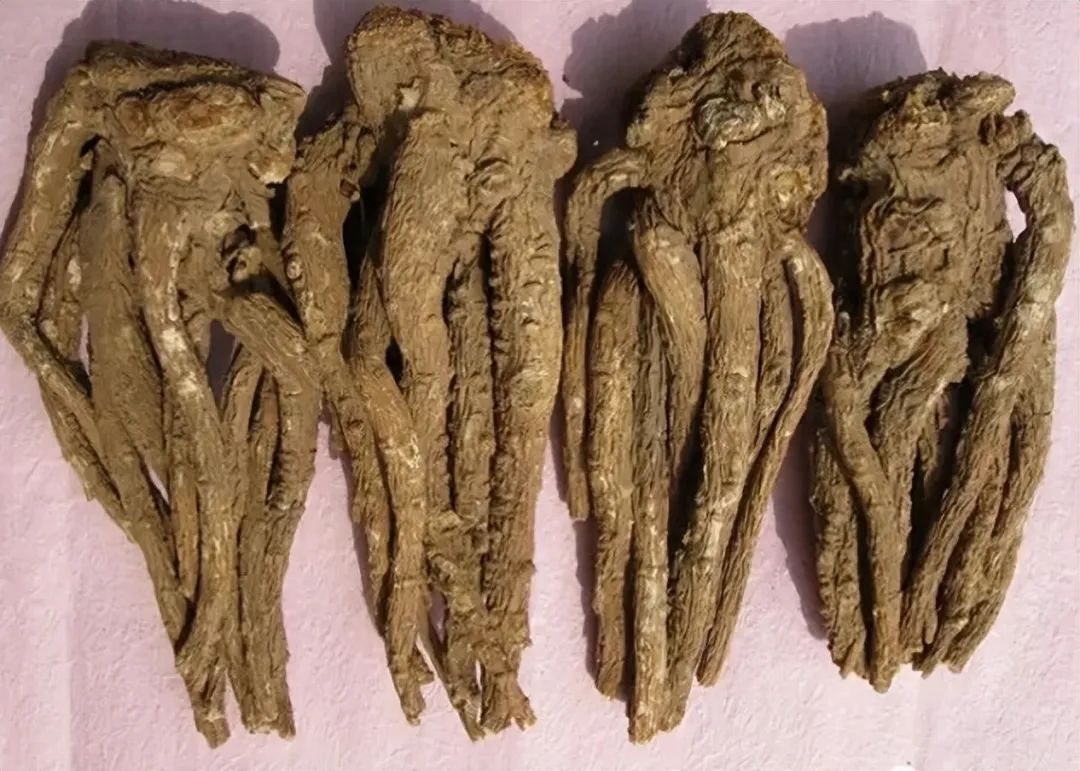
Angelica Sinensis Medicinal Material
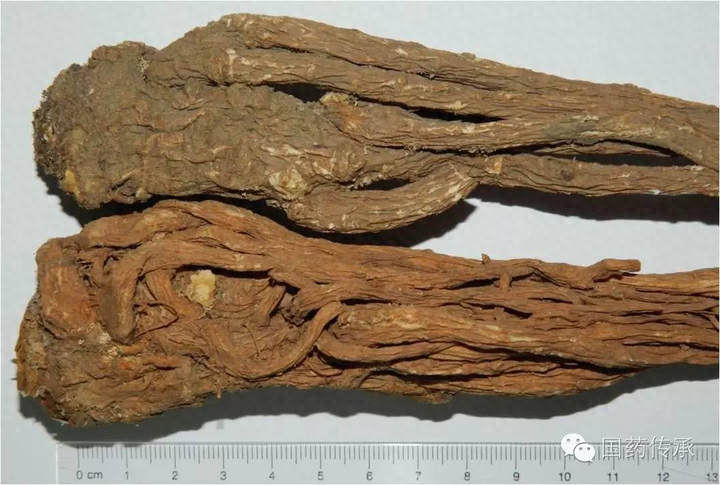
Below is Sulfur-containing Angelica Sinensis
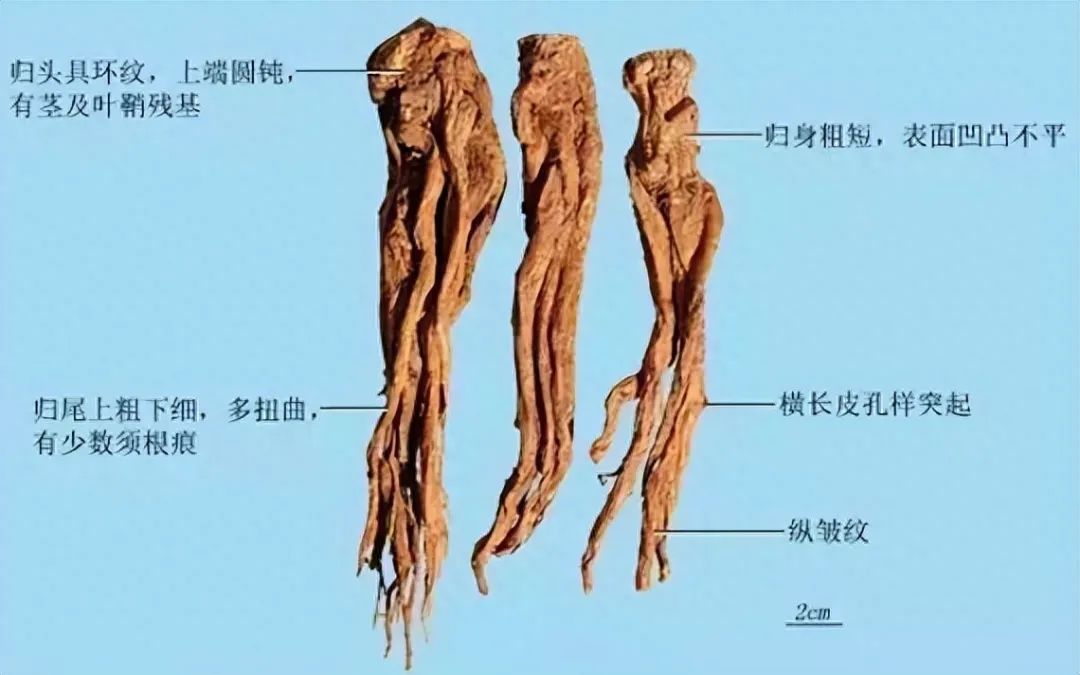
Identification of Angelica Sinensis Characteristics
【Counterfeit Angelica Sinensis】
1. Qian Hu (Peucedanum decursivum Maxim.) is the dried root of the plant belonging to the Apiaceae family. It is produced in Anhui, Zhejiang, Jiangxi, Hunan, Fujian, and other regions. In the southwestern regions of China, it is commonly referred to as “Tu Dong Gui” (Earth Angelica), while in Fujian Shanghang, Jiangxi Ningdu, and Zhejiang Yunhe, it is called “Ye Dong Gui” (Wild Angelica). It is often irregularly cylindrical, conical, or spindle-shaped, with a thinner main root and a few lateral roots, measuring 3 to 15 cm in length and 0.8 to 1.7 cm in diameter. The surface is brown to black-brown, with occasional remnants of stem bases and membranous leaf sheath remnants, with shallow straight fine longitudinal wrinkles, and visible gray-white transverse pore-like protrusions and dot-like fibrous root scars. The texture is hard, with a fracture surface that is whitish, and the periderm is relatively narrow, scattered with a few yellow oil spots. It has a fragrant aroma, with a slightly bitter and spicy taste.
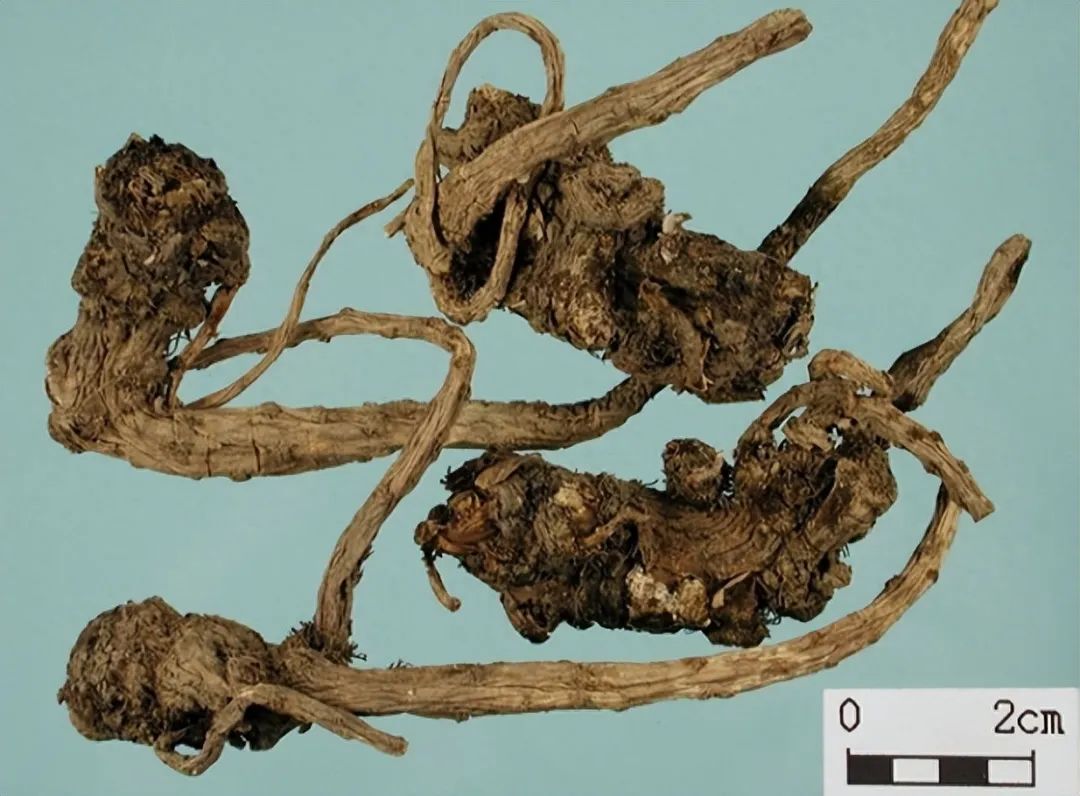
Qian Hu
2. European Angelica (Levisticum officinale Koch.) is the dried root of the plant produced in Hebei, Shandong, Henan, Inner Mongolia, Liaoning, and other regions. It is cylindrical, with slight branching at the lower part or none, varying in length, up to 20 to 30 cm, and a diameter of 0.7 to 2 cm. The surface is gray-brown or brown, with longitudinal and transverse wrinkles and scar-like pores. The top is rounded, with purple or yellow-green remnants of stem bases and leaf sheaths, surrounded by several bud-like leaf sheath coverings. The texture is flexible, with a fracture surface that is white or slightly yellowish-white, and the brown ring (cambium) is particularly prominent. It has a mild aroma, with a slightly sweet and numbing taste. Most slices are transverse, with a few being longitudinal, measuring 0.5 to 2.5 cm in diameter and 0.1 to 0.3 cm in thickness. The surface is gray-brown or gray-yellow, with longitudinal and transverse wrinkles, and the cut surface of the periderm is light brown, while the wood part is yellow-white, with numerous brown dot-like secretion cavities near the root head. When transverse slices are treated with 1 to 2 drops of iodine solution, the periderm immediately shows blue, and the wood part exhibits blue radial patterns (genuine Angelica transverse slices gradually show star-like blue spots when treated with iodine solution).
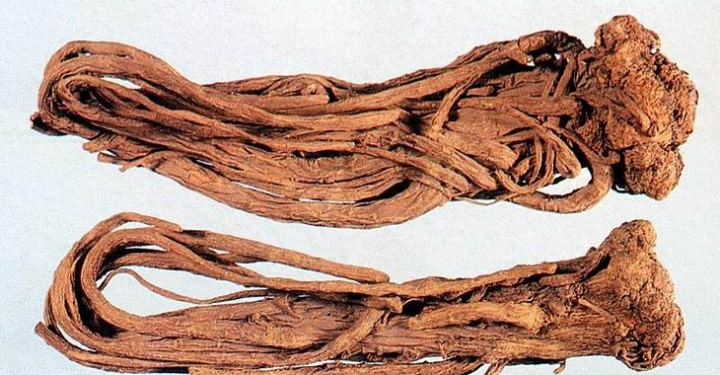
European Angelica
3. Dong Angelica (Ligusticum acutilobum Sieb. et Zucc.) is the dried root of the plant. The main root is short and thick with fine ring patterns, measuring 10 to 18 cm in length and 1.5 to 3 cm in diameter, with leaf petiole and stem base scars at the top, and a central depression, some of which have been cut evenly. Lateral roots grow from the main root, with more than 10 or more. The surface is yellow-brown, brown-yellow, or brown. The entire root has fine longitudinal wrinkles and transverse protruding pore-like scars, fibrous roots, or fibrous root scars. When dry, it is brittle, but becomes soft and flexible when damp, with a neat fracture surface, the periderm is whitish, and the wood part is yellow-white or yellow-brown. It has a fragrant aroma, with a sweet and slightly bitter taste.

Japanese Dong Angelica
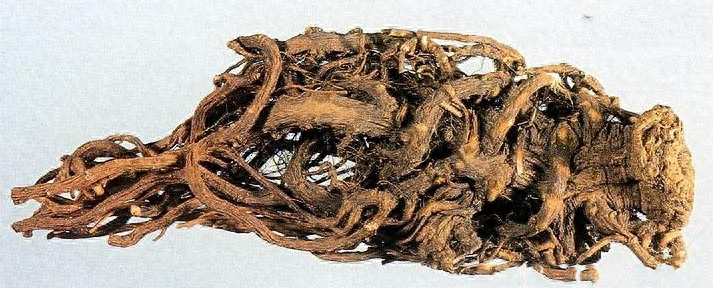
Jilin Dong Angelica
4. Da Du Huo (Angelica gigans Nakai) is the dried root of the plant. It is produced in Yanbian Autonomous Prefecture, Jilin Province, including Jiaohe County, Fusong County, and Hunjiang City, with local production and sales. The root head is short and thick, measuring 2 to 5 cm in length and 2 to 3 cm in diameter. The surface has transverse ring patterns, with leaf base scars at the top and several lateral roots below. The lateral roots measure 5 to 15 cm in length and 0.5 to 1 cm in diameter. The surface has longitudinal wrinkles and numerous transverse protruding pore-like scars, with visible brown viscous resin-like substances. The texture is brittle, with a fracture surface that is gray-white for the periderm and yellow-white for the wood part. It has a fragrant aroma, with a slightly sweet and then spicy taste.

North Korean Dong Angelica
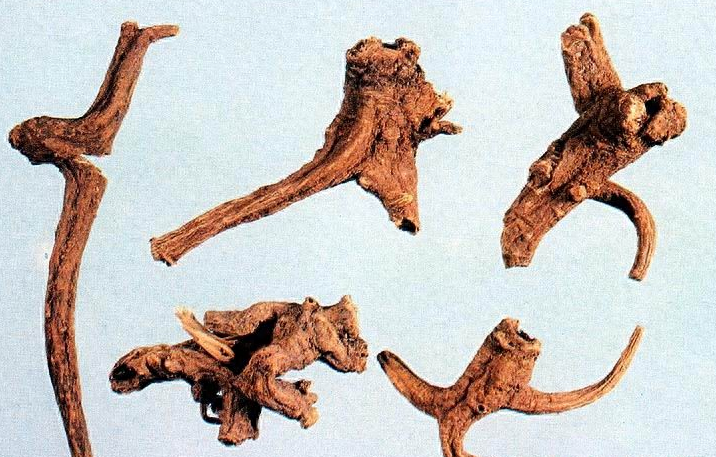
Yunnan Wild Angelica
【Processing】
Angelica Sinensis is cleaned of impurities, washed, soaked, sliced thinly, and then sun-dried or dried at low temperatures.
【Characteristics of Angelica Sinensis Slices】 The product appears as round, oval, or irregular thin slices. The outer skin is light brown to brown. The cut surface is light brown-yellow or yellow-white, flat, with cracks, and a shallow brown cambium ring in the middle, with numerous brown oil spots, a strong aroma, and a sweet, spicy, and slightly bitter taste.
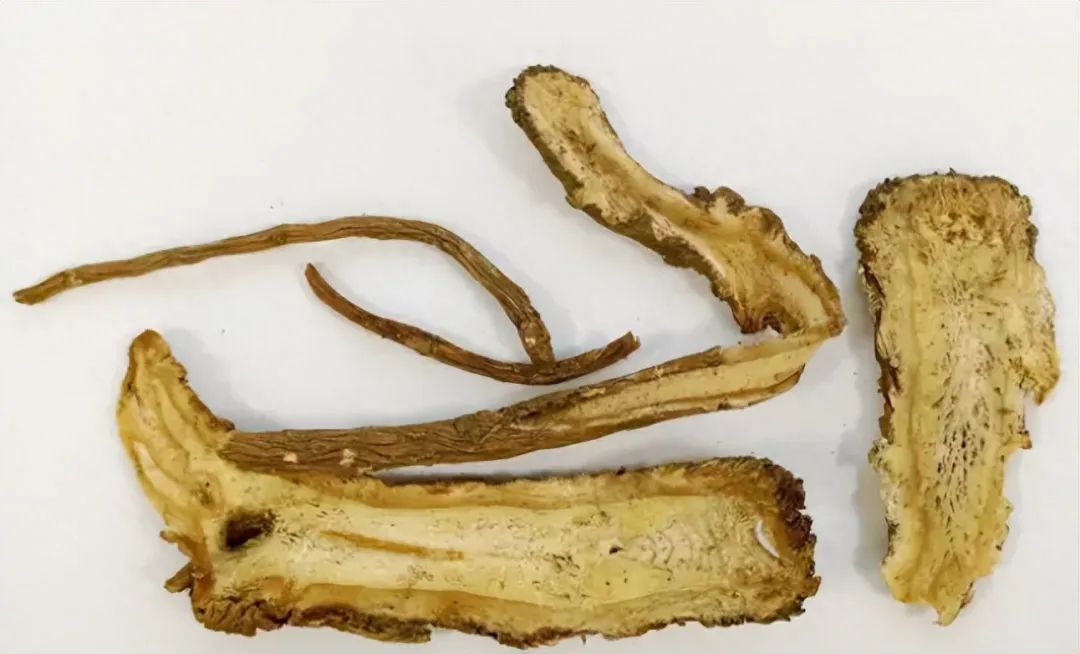
Angelica Sinensis Slices
Wine-processed Angelica Sinensis is made by taking clean Angelica Sinensis slices and stir-frying them with wine.
【Characteristics of Wine-processed Angelica Sinensis】 The product resembles Angelica Sinensis slices. The cut surface is deep yellow or light brown-yellow, with slight scorch marks. It has a strong aroma, with a hint of wine fragrance.
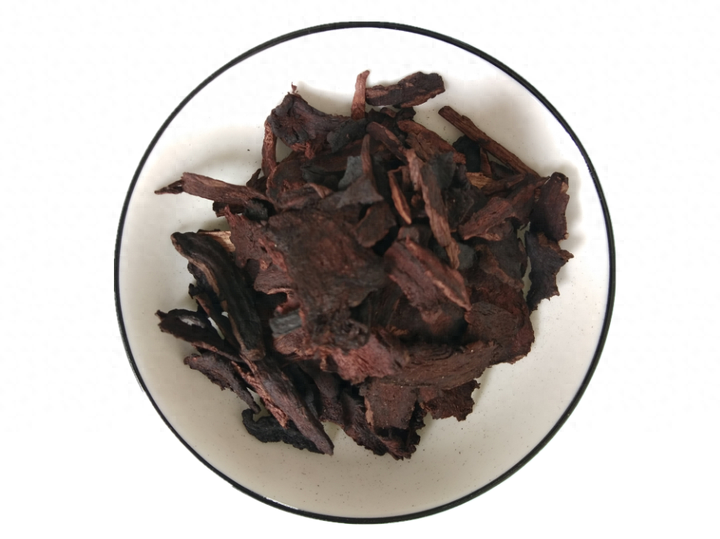
Wine-processed Angelica Sinensis Slices

Charcoal-processed Angelica Sinensis Slices
【Chemical Components】
1. Volatile Oils Volatile oils are an important component of Angelica Sinensis, with a content of about 0.4%, including three types: neutral oils, phenolic oils, and acidic oils. (1) Neutral oil components, which have the highest content, account for about 88% of the total oil, mainly including about 19 medicinal compounds such as ligustilide, chuanxiongzine, butyl phthalate, angelica ketone, new angelica lactone, and others. (2) Phenolic oil components mainly include p-methylbenzyl alcohol, 5-methoxy-2,3-dimethylphenol, phenol, o-methylphenol, p-methylphenol, guaiacol, 2,3-dimethylphenol, p-ethylphenol, m-ethylphenol, 4-ethyl-m-cresol, 2,4-dihydroxyacetophenone, and others. (3) Acidic oil components include dimethyl phthalate, dimethyl nonanedioate, dimethyl decanedioate, dimethyl camphor acid, and others.
2. Organic Acids Mainly include ferulic acid, succinic acid, phthalic anhydride, anethole, decanedioic acid, niacin, and others.
3. Other Components Such as uracil, adenine, choline, sucrose, fructose, glucose, vitamins A, B12, E, 17 amino acids, and over 20 trace elements.
【Pharmacological Effects】
1. Pharmacological effects related to efficacy
(1)Promoting Hematopoiesis: Angelica Sinensis can increase the levels of peripheral red blood cells, white blood cells, and hemoglobin, with a more pronounced effect on bone marrow hematopoietic function suppression caused by chemical drugs and radiation. Angelica polysaccharides are one of the main effective components promoting hematopoiesis.
(2)Antithrombotic: Oral decoction of Angelica Sinensis can prolong the plasma coagulation time and activated partial thromboplastin time in rats.
Ferulic acid inhibits platelet aggregation, possibly related to its inhibition of platelet release reactions, increasing the cAMP/cGMP ratio in platelets, and inhibiting the phosphorylation of phosphoinositides in platelet membranes.
The antithrombotic effect of Angelica Sinensis may be related to increasing fibrinolytic enzyme activity, anticoagulation, and inhibiting platelet aggregation.
(3)Lipid-lowering: Ferulic acid can inhibit the rate-limiting enzyme HMG-CoA reductase in the liver, reducing cholesterol synthesis in the liver, thereby lowering plasma cholesterol levels, which is one of the mechanisms of ferulic acid’s cholesterol-lowering effect.
(4)Cardiovascular Effects: Anti-myocardial ischemia and anti-arrhythmia: Water extracts of Angelica Sinensis and ferulic acid can alleviate myocardial ischemia induced by posterior pituitary extracts, increasing the uptake of 86Rb in mouse myocardium.
Vasodilation and blood pressure reduction: Angelica Sinensis has vasodilatory effects on coronary, cerebral, pulmonary, and peripheral blood vessels.
The vasodilatory effect of Angelica Sinensis on peripheral blood vessels is not affected by β-receptor blockers like propranolol and α-receptor agonists like methoxamine, indicating that the vasodilatory effect of Angelica Sinensis is unrelated to α-adrenergic and β-adrenergic receptors.
(5)Regulating Uterine Smooth Muscle Function: Angelica Sinensis has both excitatory and inhibitory effects on animal uterine smooth muscle. The volatile oils and ferulic acid from Angelica Sinensis have an inhibitory effect on uterine smooth muscle contractions; while the water-soluble and alcohol-soluble non-volatile components have an excitatory effect on uterine smooth muscle.
(6)Enhancing Immunity: Angelica Sinensis and its components (Angelica polysaccharides, ferulic acid) can enhance the immune function of the body.
2. Other Pharmacological Effects: (1) Hepatoprotective (2) Anti-radiation, anti-injury
In summary, the essence of Angelica Sinensis’s effects of nourishing blood, invigorating blood circulation, regulating menstruation, and alleviating pain is to promote hematopoietic function, inhibit platelet aggregation, prevent thrombosis, lower blood lipids, protect against myocardial ischemia, prevent arrhythmias, dilate blood vessels, lower blood pressure, regulate uterine smooth muscle function, and enhance immune function. The material basis for the efficacy of Angelica Sinensis mainly includes its volatile oils, polysaccharides, and ferulic acid. Angelica Sinensis also has anti-radiation, anti-injury, and hepatoprotective effects.
【Flavor and Meridian Entry】 Sweet, spicy, warm. Enters the Liver, Heart, and Spleen meridians.
【Functions and Indications】 Nourishes blood, invigorates blood circulation, regulates menstruation, and alleviates pain. Used for blood deficiency, pale complexion, dizziness, palpitations, irregular menstruation, amenorrhea, dysmenorrhea, abdominal pain due to deficiency-cold, rheumatic pain, trauma, carbuncles, and constipation due to dryness of the intestines. Wine-processed Angelica Sinensis invigorates blood circulation and regulates menstruation. Used for amenorrhea, dysmenorrhea, and rheumatic pain.
【Dosage and Administration】 6 to 12 g.
【Storage】 Store in a cool, dry place, protect from moisture and pests.
Note: This article aims to promote Traditional Chinese Medicine culture. The TCM knowledge mentioned in the text is for learning and exchange purposes only.
WeChat has been updated! If youneither★starred me, nor liked or

